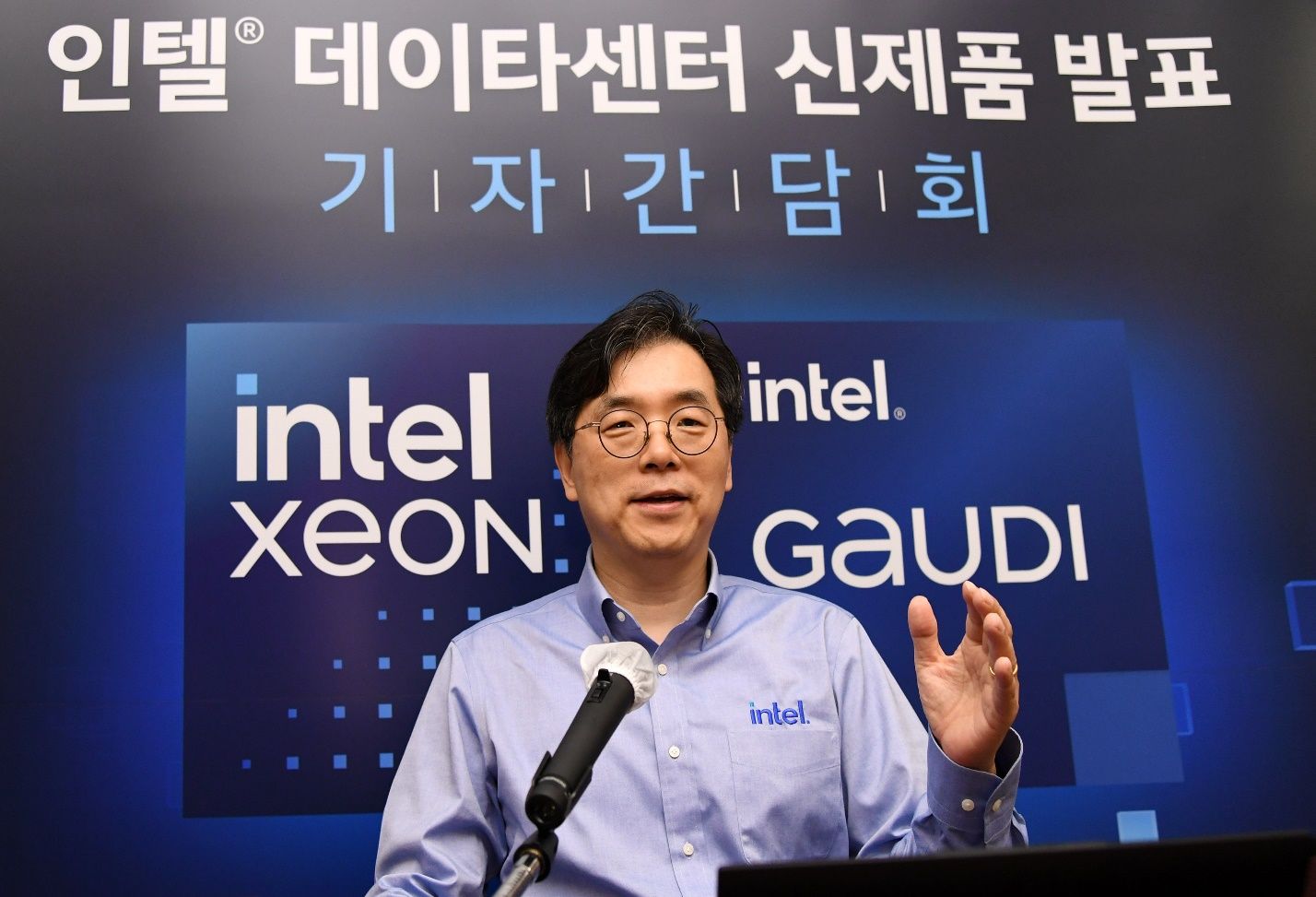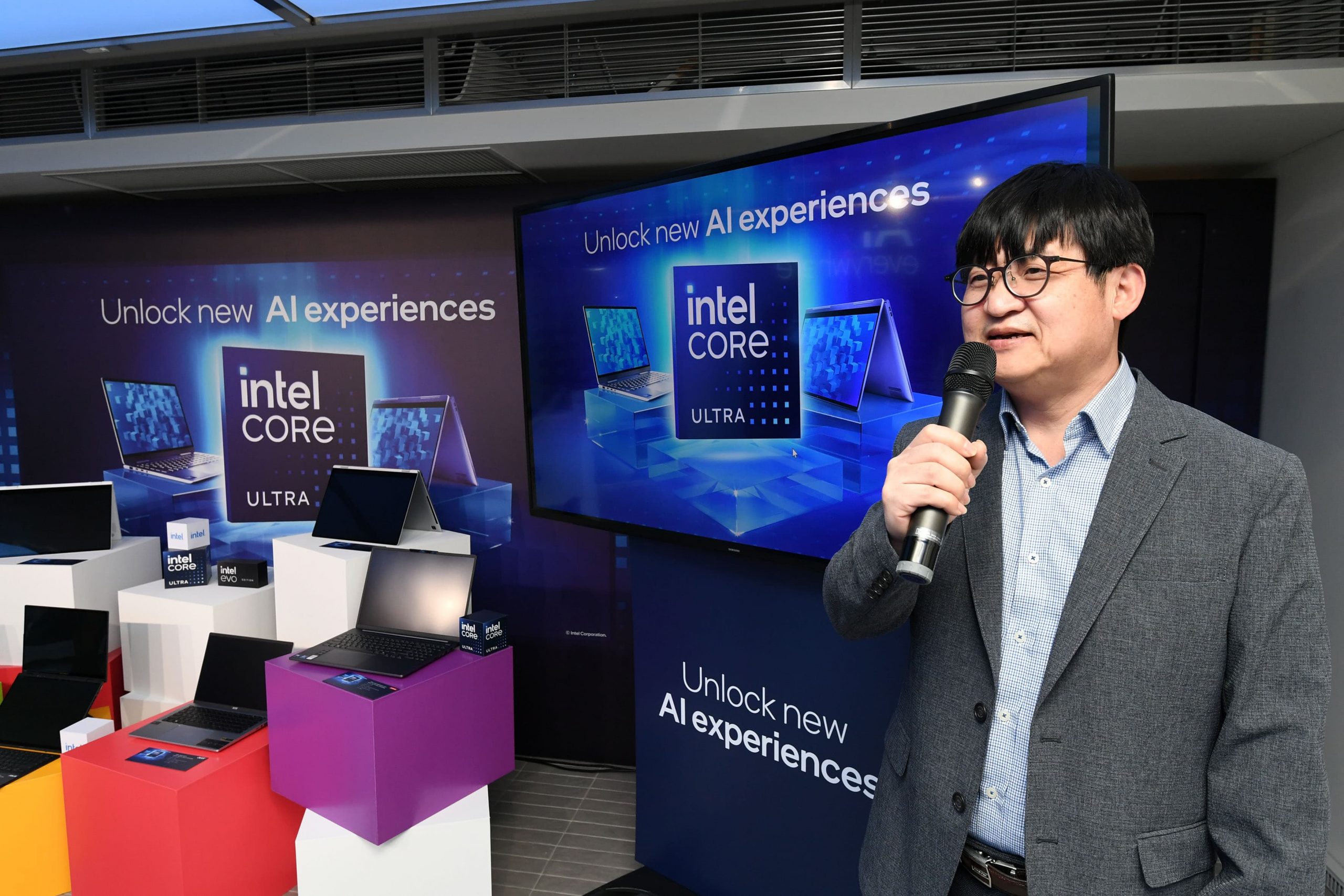Intel Launches Low-Power, High-Performance Silvermont Microarchitecture

NEWS HIGHLIGHTS:
- Intel announces Silvermont microarchitecture, a new design in Intel's 22nm Tri-Gate SoC process delivering significant increases in performance and energy efficiency.
- Silvermont microarchitecture delivers ~3x more peak performance or the same performance at ~5x lower power over current-generation Intel® Atom™ processor core.1
- Silvermont to serve as the foundation for a breadth of 22nm products targeted at tablets, smartphones, microservers, network infrastructure, storage and other market segments including entry laptops and in-vehicle infotainment.
SANTA CLARA, Calif., May 6, 2013 – Intel Corporation today took the wraps off its brand new, low-power, high-performance microarchitecture named Silvermont.
The technology is aimed squarely at low-power requirements in market segments from smartphones to the data center. Silvermont will be the foundation for a range of innovative products beginning to come to market later this year, and will also be manufactured using the company's leading-edge, 22nm Tri-Gate SoC manufacturing process, which brings significant performance increases and improved energy efficiency.
"Silvermont is a leap forward and an entirely new technology foundation for the future that will address a broad range of products and market segments," said Dadi Perlmutter, Intel executive vice president and chief product officer. "Early sampling of our 22nm SoCs, including "Bay Trail" and "Avoton" is already garnering positive feedback from our customers. Going forward, we will accelerate future generations of this low-power microarchitecture on a yearly cadence."
The Silvermont microarchitecture delivers industry-leading performance-per-watt efficiency.2 The highly balanced design brings increased support for a wider dynamic range and seamlessly scales up and down in performance and power efficiency. On a variety of standard metrics, Silvermont also enables ~3x peak performance or the same performance at ~5x lower power over the current-generation Intel® Atom™ processor core.1
Silvermont: Next-Generation Microarchitecture
Intel's Silvermont microarchitecture was designed and co-optimized with Intel's 22nm SoC process using revolutionary 3-D Tri-gate transistors. By taking advantage of this industry-leading technology, Intel is able to provide a significant performance increase and improved energy efficiency.
Additional highlights of the Silvermont microarchitecture include:
- A new out-of-order execution engine enables best-in-class, single-threaded performance.1
- A new multi-core and system fabric architecture scalable up to eight cores and enabling greater performance for higher bandwidth, lower latency and more efficient out-of-order support for a more balanced and responsive system.
- New IA instructions and technologies bringing enhanced performance, virtualization and security management capabilities to support a wide range of products. These instructions build on Intel's existing support for 64-bit and the breadth of the IA software installed base.
- Enhanced power management capabilities including a new intelligent burst technology, low- power C states and a wider dynamic range of operation taking advantage of Intel's 3-D transistors. Intel® Burst Technology 2.0 support for single- and multi-core offers great responsiveness scaled for power efficiency.
"Through our design and process technology co-optimization we exceeded our goals for Silvermont," said Belli Kuttanna, Intel Fellow and chief architect. "By taking advantage of our strengths in microarchitecture development and leading-edge process technology, we delivered a technology package that enables significantly improved performance and power efficiency – all while delivering higher frequencies. We're proud of this accomplishment and believe that Silvermont will offer a strong and flexible foundation for a range of new, low-power Intel SoCs."
Architecting Across a Spectrum of Computing
Silvermont will serve as the foundation for a breadth of 22nm products expected in market later this year. The performance-per-watt improvements with the new microarchitecture will enable a significant difference in performance and responsiveness for the compute devices built around these products.
Intel's quad-core "Bay Trail" SoC is scheduled for holiday 2013 tablets and will more than double the compute performance capability of Intel's current-generation tablet offering1. Due to the flexibility of Silvermont, variants of the "Bay Trail" platform will also be used in market segments including entry laptop and desktop computers in innovative form factors.
Intel's "Merrifield" is scheduled to ship to customers by the end of this year. It will enable increased performance and battery life over current-generation products1 and brings support for context aware and personal services, ultra-fast connections for Web streaming, and increased data, device and privacy protection.
Intel's "Avoton" will enable industry-leading energy efficiency and performance-per-watt for microservers2, storage and scale out workloads in the data center. "Avoton" is Intel's second-generation Intel® Atom™ processor SoC to provide full server product capability that customers require including 64-bit, integrated fabric, error code correction, Intel virtualization technologies and software compatibility. "Rangeley" is aimed at the network and communication infrastructure, specifically for entry-level to mid-range routers, switches and security appliances. Both products are scheduled for the second half of this year.
Concurrently, Intel is delivering industry-leading advancements on its next-generation, 22nm Haswell microarchitecture for Intel® Core™ processors to enable full-PC performance at lower power levels for innovative "2-in-1" form factors, and other mobile devices available later this year. Intel also plans to refresh its line of Intel® Xeon® processor families across the data center on 22nm technology, delivering better performance-per-watt and other features.
"By taking advantage of both the Silvermont and Haswell microarchitectures, Intel is well positioned to enable great products and experiences across the full spectrum of computing," Perlmutter said.
인텔코리아에서 보낸 보도자료
인텔, 저전력·고성능 실버몬트 마이크로 아키텍처 출시
- 인텔, 비약적인 성능 향상과 에너지 효율성을 제공하는 인텔 22nm 트라이-게이트 SoC 프로세스, 실버몬트 마이크로 아키텍처 발표
- 실버몬트 마이크로 아키텍처, 기존 인텔® 아톰™ 프로세서 코어1 대비 최대 3배 최고 성능 또는 동일 성능 기준 5배 적은 전력 소모 제공
- 실버몬트 아키텍처, 태블릿, 스마트폰, 마이크로서버, 네트워크 인프라, 스토리지 및 엔트리급 노트북과 차량용 인포테인먼트(IVI)를 포함한 다양한 시장을 타깃으로 하는 22nm 제품의 기반으로 지원
2013년 5월 7일, 서울 – 인텔은 오늘 새로운 저전력, 고성능 마이크로 아키텍처인 실버몬트(Silvermont)를 공개했다.
스마트폰에서 데이터센터까지 시장의 저전력 요구를 달성하기 위해 구현된 실버몬트는 올해 말 출시예정인 많은 혁신적인 제품들의 기반이 될 것이며, 비약적인 성능 및 에너지 효율성 향상을 제공하는 인텔 최신 기술인 22nm 트라이-게이트 SoC 제조 공정을 이용하여 생산될 예정이다.
인텔의 수석부사장이자 최고 제품 책임자(CPO)인 대디 펄뮤터(Dadi Perlmutter)는 “실버몬트는 폭넓은 제품과 시장을 겨냥한 미래를 위한 완전히 새로운 기반 기술이자, 비약적 발전”이라며, “인텔은 ‘베이 트레일(Bay Trail)’과 ‘아보톤(Avoton)’을 포함한 인텔의 22nm SoC 초기 샘플링에서 이미 고객들에게 긍정적인 피드백을 얻었다. 앞으로 매년 이러한 차세대 저전력 마이크로 아키텍처 공개를 촉진할 것이다”라고 밝혔다.
실버몬트 마이크로 아키텍처는 업계 선도적인 와트당 성능 효율성2을 제공한다. 고도로 균형 잡힌 설계는 넓고 다양한 범위의 향상된 지원 및 균일한 성능과 전력효율성을 제공한다. 다양한 표준 매트릭스 상에서 실버몬트는 기존 세대 인텔® 아톰™ 프로세서 코어1 에 비해 최대 3배 최고 성능 또는 동일 성능 기준 5배 적은 전력 소모 구현이 가능하다.
실버몬트: 차세대 마이크로 아키텍처
인텔의 실버몬트 아키텍처는 획기적인 3-D 트라이-게이트 트랜지스터를 사용하는 인텔 22nm SoC공정에 상호 최적화되도록 설계되었다. 업계를 선도하는 이 최신 기술을 통해, 인텔은 비약적인 성능 증가와 향상된 에너지 효율성을 제공할 수 있게 되었다.
실버몬트 마이크로 아키텍처의 주요 성능은 다음과 같다.
- 새로운 비순차적 실행 엔진으로 동급 최고의 단일 스레드 성능 제공
- 새로운 멀티 코어 및 시스템 패브릭 아키텍처는 최대 8개 코어까지 확장 가능, 보다 높은 대역폭을 위한 성능 향상, 낮은 레이턴시(Latency), 보다 균형 있고 반응적인 시스템을 위한 효율적인 비순차적(out-of-order) 지원
- 새로운 인텔 아키텍처 명령어 및 기술은 폭넓은 제품을 지원하기 위한 향상된 성능과 가상화 및 보안 관리성 제공. 이러한 명령어들은 인텔의 기존 64비트 지원 및 인텔 아키텍처 소프트웨어 설치 기반으로 구축
- 새로운 인텔리전트 버스트 기술, 저전력 C 스테이트, 인텔의 3-D 트렌지스터의 장점을 활용한 폭넓은 운영상 장점을 포함한 강화된 전력 관리성. 인텔® 버스트 테크놀로지 2.0은 싱글 및 멀티코어를 지원하여 전력 효율성을 위해 확장된 뛰어난 응답성 제공.
벨리 쿠탄나(Belli Kuttanna) 인텔 팰로우 겸 수석 아키텍트는 “상호 최적화된 설계 및 공정 기술을 통해 우리는 실버몬트에 대한 기존 목표를 넘어섰다”며 “마이크로 아키텍처 개발 및 선도적인 프로세스 기술에 대한 인텔의 강점을 바탕으로 높은 클럭스피드를 제공하면서도 현저하게 향상된 성능 및 전력 효율성을 가능하게 하는 기술 패키지를 제공한다. 우리는 이러한 성과를 자랑스럽게 생각하며 실버몬트가 다양한 새로운 저전력 인텔 SoC를 위한 강력하고 유연한 기반을 제공할 것으로 믿는다”고 밝혔다.
컴퓨팅의 스펙트럼을 넘나드는 설계
실버몬트는 올해 말 시장 출시 예정인 22nm 제품들의 기반이 될 것이다. 새 마이크로 아키텍처의 와트당 성능 향상은 컴퓨팅 디바이스의 성능과 응답성의 현저한 차이를 만들어낼 것으로 기대된다.
인텔의 쿼드코어 ‘베이트레일’ SoC는 2013년 홀리데이 시즌에 출시될 태블릿 제품에 탑재될 예정이며, 인텔의 기존 세대 태블릿이 제공1하는 컴퓨팅 성능의 2 배 이상 향상을 제공할 것이다. 실버몬트의 유연성으로 ‘베이 트레일’ 플랫폼을 활용한 제품들은 엔트리급 노트북 및 혁신적인 폼 팩터의 데스크톱 컴퓨터 시장에서도 사용될 것이다.
인텔의 ‘메리필드(Merrifield)’는 올해 말 고객들에게 제공될 예정이며 기존 세대 제품보다 향상된 성능과 배터리 수명을 제공하고 상황 인식(context aware) 및 개인 서비스, 웹 스트리밍을 위한 울트라-패스트(Ultra-fast) 커넥션, 향상된 데이터, 디바이스, 프라이버시 보호 기능을 제공할 것이다.
인텔의 ‘아보톤(Avoton)’은 마이크로서버2 스토리지, 데이터센터의 스케일아웃 워크로드, 업계 혁신적인 에너지 효율성과 와트당 성능을 제공할 것이다. ‘아보톤’은 인텔® 아톰™ 프로세서의 2세대 SoC로 64비트, 통합 패브릭, 에러코드 정정, 인텔 가상화 기술, 소프트웨어 호환성 등 고객들이 요구하는 서버 제품의 기능을 모두 제공한다. ‘랭글리(Rangeley)’는 엔트리급에서 미드레인지급 라우터, 스위치, 보안 장비 등 네트워크 및 통신 인프라를 타깃으로 한 제품이다. 두 제품 모두 올해 하반기 중 출시 예정이다.
동시에 인텔은 혁신적인 투인원(2-in-1) 폼 팩터를 위해 저전력으로 풀 PC 성능을 제공하는 인텔® 코어™ 프로세서를 위한 차세대 22nm 하스웰(Haswell) 마이크로 아키텍처에서 업계선도적인 향상을 제공하고 있으며, 다른 모바일 디바이스는 올해 말 출시 예정이다. 또한 인텔은 뛰어난 와트당 성능 및 기타 기능들을 제공하는 22nm 기술 기반의 데이터센터용 인텔® 제온® 프로세서 제품군의 리프레시를 계획하고 있다.
펄뮤터 부사장은 “실버몬트와 하스웰 두 마이크로 아키텍처의 장점으로, 인텔은 컴퓨팅의 모든 스펙트럼을 넘나드는 뛰어난 제품과 사용자 경험을 제공할 수 있게 되었다”고 말했다.





![[인텔 AI 애브리웨어] 최인혁 상무, "2년간 AI 탑재 1억개 클라이언트 프로세서 공급"∙∙∙인텔 코어 울트라 발표](https://storage.googleapis.com/cdn.media.bluedot.so/bluedot.techsuda/wp-content/uploads/2023/12/IntelKorea-Ultra_Choi.jpg)